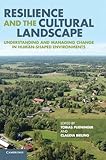Resilience and the cultural landscape: understanding and managing change in human-shaped environments / editors by: Tobias Plieninger and Claudia Bieling
Plieninger, Tobias [editor] | Bieling, Claudia [editor/a].
Tipo de material: Libro
impreso(a)
Editor: Cambridge, UK: Cambridge University Press, 2012Descripción: xvi, 348 páginas : fotografías, ilustraciones, mapas, retratos ; 23 centímetros.ISBN: 1107020786; 9781107020788.Tema(s): Paisaje cultural
Libro
impreso(a)
Editor: Cambridge, UK: Cambridge University Press, 2012Descripción: xvi, 348 páginas : fotografías, ilustraciones, mapas, retratos ; 23 centímetros.ISBN: 1107020786; 9781107020788.Tema(s): Paisaje cultural| Tipo de ítem | Biblioteca actual | Colección | Signatura | Estado | Fecha de vencimiento | Código de barras |
|---|---|---|---|---|---|---|
| Libros |
Biblioteca San Cristóbal
Texto en la configuración de la biblioteca San Cristóbal |
Acervo General | 304.2 R45 | Disponible | ECO010019230 |
Incluye bibliografía e índice: páginas 343-348
List of contributors.. Preface.. Part I: Conceptualising landscapes as social-ecological systems.. 1 Connecting cultural landscapes to resilience.. 2 Landscapes as integrating frameworks for human, environmental and policy processes.. 3 From cultural landscapes to resilient social-ecological systems: transformation of a classical paradigm or a novel approach?.. 4 Conceptualising the human in cultural landscapes and resilience thinking.. 5 System or arena? Conceptual concerns around the analysis of landscape dynamics.. 6 Resilience thinking versus political ecology: understanding the dynamics of small-scale, labour-intensive farming landscapes.. Part II: Analysing landscape resilience.. 7 In search of resilient behaviour: using the driving forces framework to study cultural landscapes.. 8 Cultural landscapes as complex adaptive systems: the cases of northern Spain and northern Argentina.. 9 Linking path dependency and resilience for the analysis of landscape development.. 10 The sugar-cane landscape of the Caribbean islands: resilience, adaptation and transformation of the plantation social-ecological system.. 11 Offshore wind farming on Germany's North Sea coast: tracing regime shifts across scales.. Part III: Managing landscapes for resilience.. 12 Collective efforts to manage cultural landscapes for resilience.. 13 Response strategy assessment: a tool for evaluating resilience for the management of social-ecological systems.. 14 Ecosystem services and social-ecological resilience in transhumance cultural landscapes: learning from the past, looking for a future.. 15 The role of homegardens in strengthening social-ecological resilience: case studies from Cuba and Austria.. 16 Promises and pitfalls of adaptive management in resilience thinking: the lens of political ecology.. Part IV: Perspectives for resilient landscapes
17 A heterarchy of knowledge: tools for the study of landscape histories and futures.. 18 Towards a deeper understanding of the social in resilience: the contributions of cultural landscapes.. 19 Resilience and cultural landscapes: opportunities, relevance and ways ahead.. Index
All over the world, efforts are being made to preserve landscapes facing fundamental change as a consequence of widespread agricultural intensification, land abandonment and urbanisation. The 'cultural landscape' and 'resilience' approaches have, until now, largely been viewed as distinct methods for understanding the effects of these dynamics and the ways in which they might be adapted or managed. This book brings together these two perspectives, providing new insights into the social-ecological resilience of cultural landscapes by coming to terms with, and challenging, the concepts of 'driving forces', 'thresholds', 'adaptive cycles' and 'adaptive management'. By linking these research communities, this book develops a new perspective on landscape changes. Based on firm conceptual contributions and rich case studies from Europe, the Americas and Australia, it will appeal to anyone interested in analysing and managing change in human-shaped environments in the context of sustainability.
